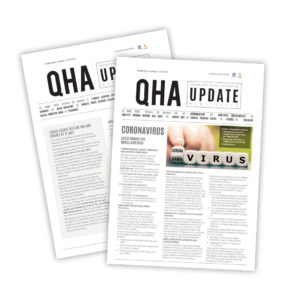The below advice is to assist QHA members and their employees who have been directly impacted by flooding or flood damage.
My venue is unable to open due to flooding. What can I do?
Employers may stand down employees where they cannot be usefully employed due to a stoppage of work which the employer cannot reasonably be held responsible for. During a period of stand down, the employer is not required to pay an employee for the stand down period.
The ability for an employer to stand down employees may be triggered by either section 524 of the Fair Work Act 2009 (FW Act) or an applicable stand down clause in any registered workplace agreement applicable to an employee.
It is important to note that a stand down can only take effect once the employer has informed employees that they are stood down. Failure to inform employees means the stand down has not taken effect.
The QHA recommends that employers inform employees of the reason for the stand down, and also notify the employees of the stand down in writing.
Employers who will be standing down employees are recommended to review the QHA's Fact Sheet on Stand Down. This Fact Sheet also includes a template letter which can be adjusted and issued to employees.
Fact Sheet and template letter available HERE.
To ensure the stand down is legal, employers are recommended to ensure that the below three elements apply before standing down employees:
- The employees cannot be usefully employed;
- There is a stoppage of work; and
- The reason for the stoppage of work is one which the employer cannot reasonably be held responsible for.
Where the business is suffering a down turn in demand, but continues to operate at reduced capacity, this situation is unlikely to be found as a stoppage of work. This means a decision to stand down employment may not be found as legal if an external claim is lodged with the Fair Work Commission.
Please note that if staff are not stood down, permanent employees must still be paid their wages for the applicable period.
As an alternative to stand down, employers may ask (not direct) employees to utilise their paid leave entitlement, such as annual or long service leave.
My employee is unable to attend work as they are impacted by flooding. What leave can they access?
If an employee is unable to attend work the period may need to be taken as unpaid leave.
Alternatively, the employee may request to access either their personal/carers leave or annual leave.
Personal/Carers’ Leave
Section 97 of the FW Act provides that a full or part-time employee can access paid personal/carers’ leave either:
- because they are unfit for work due to personal illness or injury; or
- to provide care or support to a member of their immediate family or household, who requires care or support because of a personal illness or injury or an unexpected emergency affecting that person.
As such, an employee who is providing care or support to a member of their immediate family or household who requires care or support because of an unexpected emergency (such as the flooding), may access paid personal/carers leave.
Where this is the case, employers may request the employee to provide appropriate evidence (i.e. a medical certificate or statutory declaration).
Annual Leave
An employee who cannot attend work due to flooding may apply to access their accrued annual leave should they wish to be paid. Employers may refuse a request for annual leave, if the refusal is reasonable.
Community service leave
Under section 110 of the FW Act, an employee who is working in a voluntary emergency management activity, such as the SES, is entitled to take unpaid leave. This leave may include:
- time off when the employee is engaged in the activity;
- reasonable travel time associated with the activity; and
- reasonable rest time immediately following the activity.
Work Health and Safety Obligations
Members should be aware of their work health and safety obligations and the risks of their employees during a natural disaster.
When rostering staff, members should consider:
- Is it safe for employees to access the workplace?
- Are there additional risks in the workplace posed by floods? This may include safety of drinking water, electrical wiring, slips and trip hazards from muddy surfaces.
- Will employees be performing different duties that requires additional training? For example, employees participating in clean up.
Any hazards or risks in the workplace need to be identified and controlled by eliminating or reducing them as far as is practicable. It is important to communicate the hazards, risks and the control measures to all employees, including any contractors.


